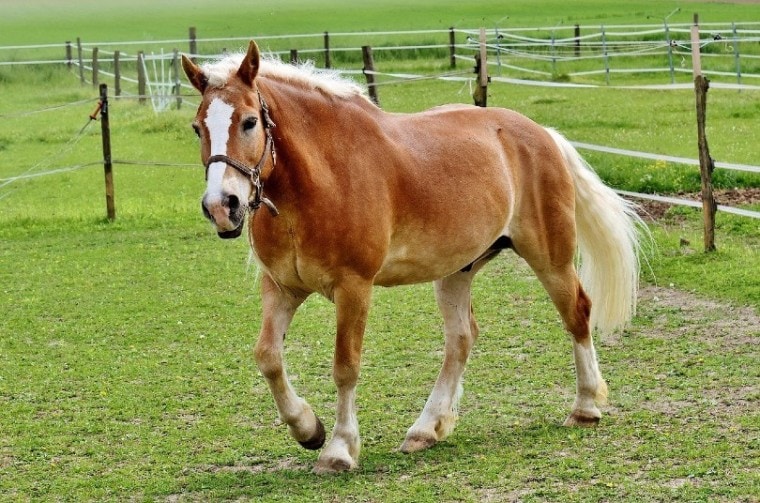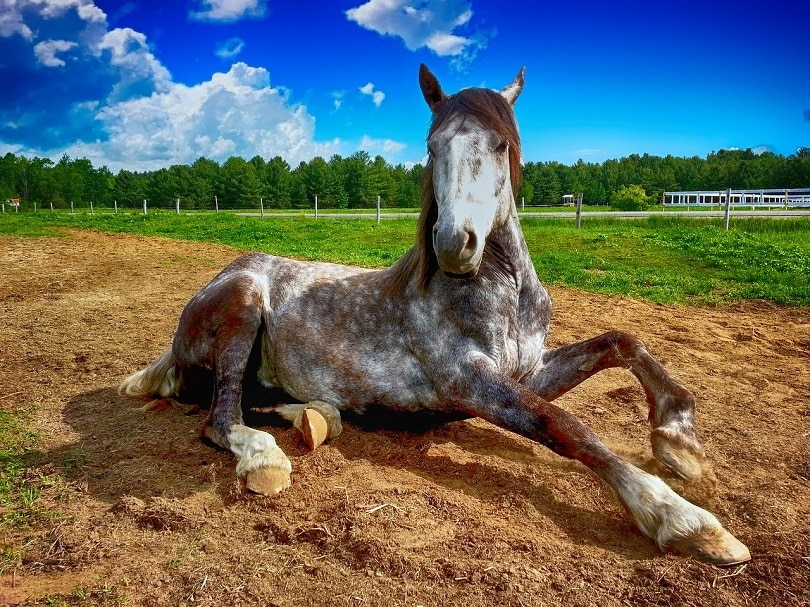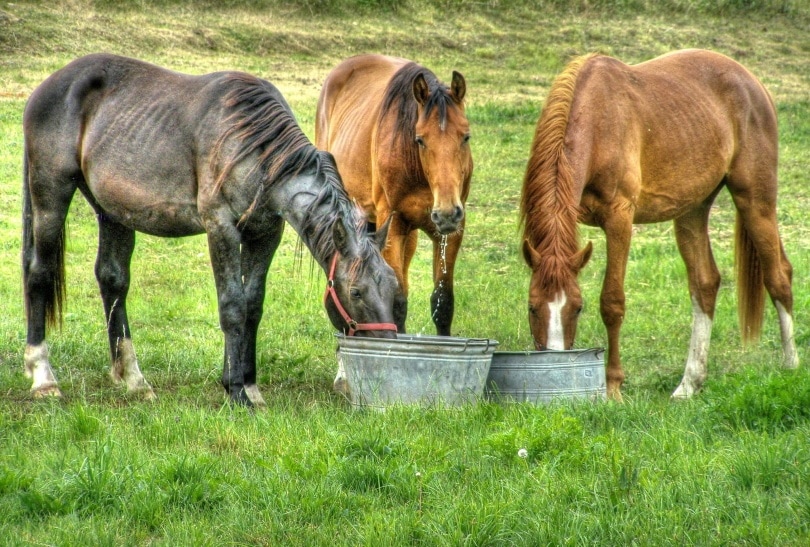
As a horse owner, it’s up to you to ensure your horse is healthy and happy. It’s important to have a good understanding of your horse and its physical makeup. Under all the skin and hair of your horse is the skeleton that’s key to your animal’s well-being.
A horse’s skeleton provides support for the muscles and protects the animal’s internal organs. It also provides the horse with the ability to move at various speeds and to lie down or graze.
While we’re not going to provide you with an anatomy lesson here regarding your horse’s skeletal system, we are going to tell you a few interesting facts about a horse’s skeleton you may be surprised to learn.
The 4 Facts About a Horse’s Skeleton
1. Some Horse Skeletons Have More Bones Than Others
The skeletons of most horse breeds consist of 205 bones. However, there are some breeds that have fewer. For example, the Arabian horse has fewer bones in its spinal column and some even have only 17 ribs instead of the usual 18. The thoracic spinal column on some Arabian horses is shorter than other breeds, which is why these horses have fewer ribs.
All horse breeds have eight short ribs which are considered “true ribs”. These short ribs connect completely between the spinal column and the sternum. The remaining ribs are called “floating” ribs because they don’t reach all the way to the sternum.

2. The Withers on a Horse Are Part of the Thoracic Vertebrae
The withers on a horse are the point of the animal’s back where the shoulder blades meet at the base of the neck. That visible ridge between your horse’s shoulder blades is more than the reference point for measuring height. It plays a key role in the mechanics of how your horse can move, and so much in fact that even small problems with the withers can affect your horse’s movement.
You may be surprised to learn the withers are actually the spiny vertical tops of the thoracic vertebrae. When you view a horse’s skeleton, you’ll see the long and narrow withers. The reason they don’t appear spiny on the exterior of your horse is that the animal’s heavily muscled back masks them. The withers are shaped into the part of your horse where you sit comfortably in the saddle.
3. The Coffin Bone Is the Foundation of the Hoof
Under the smooth exterior of a horse’s hoof is a bone called the coffin bone. The coffin bone gets its name because it’s encased in the hoof like a corpse in a coffin. This bone, which is also known as the distal phalanx or pedal bone, plays a crucial role in the form and function of the hoof.
When a horse is very young, the shovel-shaped coffin bone correlates well with the hoof shape. Horses are born with balanced, symmetrical coffin bones but bone is dynamic and influenced by various forces.
As a horse ages, the load on the foot and the environment influences the hoof capsule holding the coffin bone wherein the bone adapts by changing shape and density. The coffin bone is the first supporting bone in a horse’s skeletal system to begin bearing weight as the hoof touches the ground. It’s a bone that must be healthy for a horse to walk and run comfortably.

4. Horses Don’t Have Collarbones
Even though horses have shoulders, they do not have collarbones. In animals that do have collarbones, they connect the arm to the body like in humans.
A horse’s front legs connect to the spinal column with soft tissues including muscles, tendons, and ligaments to increase the animal’s range of motion.
We hope you enjoyed these interesting facts about horse skeletons. Perhaps this information will help you look at your horse differently and give you a better understanding of how your horse is put together. To keep your horse’s bones healthy and strong, provide it with high-quality horse feed and manage its weight.

Final Thoughts
While most people focus on the horse’s outer beauty, there is something quite beautiful about their skeleton. We hope that you remember these fun facts about a horse’s skeleton the next time you are looking at these majestic animals.
Featured Image Credit: Alexas_Fotos, Pixabay







